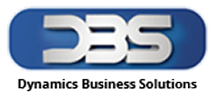Surprising fact: organizations report up to a 35% reduction in month‑end close time after unifying payroll and HR on a single enterprise system.
This introduction explains how Dynamo Payroll unifies core pay, human capital, and employee self-service on Microsoft dynamics 365 finance to cut manual reconciliations and speed close cycles.
By using a single system of record, leaders remove data silos and get cleaner information for faster decisions. Native links to general ledger, subledgers, and reports improve accuracy and audit readiness.
Cloud-based deployment on a trusted platform brings enterprise security, standardized workflows, and scalable features as headcount grows. Self-service tools shift routine queries away from admins, lowering per-employee costs and boosting satisfaction.
CFOs gain real-time visibility into liabilities, taxes, and benefits accruals so cash and compliance are managed proactively. Learn more about the integrated offering for Dynamics by visiting Dynamo Payroll for Dynamics 365 Finance &.
Key Takeaways
- Unified solution reduces manual work and accelerates month‑end close.
- Single system of record improves information quality and audit readiness.
- Native finance integration links pay data directly to journals and reports.
- Employee self-service lowers admin cost and raises satisfaction.
- Real‑time visibility helps CFOs manage cash, taxes, and accruals.
Why CFOs Today Prioritize Cloud Payroll Automation on Microsoft Dynamics 365 Finance and Operations
Moving from spreadsheets to a unified system gives leaders live cost visibility and fewer reconciliation errors.
From manual processing to streamlined, compliant payroll at scale
Finance leaders report faster close cycles when payroll posts in real time to the general ledger. Integrating microsoft dynamics 365 with core finance reduces manual reconciliations and shortens month‑end tasks.
Real-time visibility that accelerates close and reduces DSO
Accurate time capture flows into invoicing and pay, which speeds downstream billing and lowers days sales outstanding. Standardized workflows and automated notifications cut errors and rework.
| Benefit | Impact | Typical KPI | Notes |
| Live posting to ledger | Faster close | Close days reduced 20–35% | Requires integration between microsoft dynamics and payroll module |
| Automated validations | Lower error rates | Reconciliation time cut in half | Improves audit readiness |
| Employee self-service | Fewer support tickets | Ticket volume down 30%+ | 24/7 access to pay history and tax forms |
| Time-to-billing link | Reduced DSO | Accelerated cash collection | Aligns time, billing, and finance operations |
For practical adoption tips and proven outcomes, see 7 ways Dynamics payroll solves HR.
Dynamo Payroll: Cloud-Based Payroll, Human Resources, and Employee Self-Service Built for Dynamics 365 FO
Built for Microsoft environments, Dynamo combines payroll, time capture, and employee self-service into one platform.
One solution for payroll, HR, time & attendance, and ESS
Dynamo is one solution that unifies core pay, human resources, time & attendance, and employee self-service to simplify operations and strengthen governance.
The suite covers recruitment, training, leave, rostering, benefits, final settlement, and visa/work permit tracking—all inside a single system.
Seamless integration with Finance and Operations and Business Central
Native integration connects pay calculations and postings directly to Microsoft Dynamics 365 Finance & Operations and Business Central.
This ensures allocations, journals, and reports update in real time with minimal manual touch, improving close speed and audit readiness.
Backed by advanced workflows, Power BI insights, and email notifications
Embedded workflows, notifications, and Power BI dashboards surface exceptions, accruals, and variances before they hit the books.
A flexible formula builder adapts pay rules for multi-entity and region-specific requirements without custom code. Employees get 24/7 ESS access to pay history and self-service tools, reducing tickets and raising adoption.
- Built on the Microsoft platform to consolidate security and identities.
- Information from HR and pay feeds finance, audit, and compliance processes.
Calculating ROI: Cost Drivers and Savings Levers for Finance and Operations Leaders
Measuring savings starts with counting manual touches and estimating hourly cost reduction once those tasks are automated. Capture current cycle time, error rates, and ticket volumes to build a clear baseline. Use integrated reporting to turn that baseline into dollar savings and faster close times for your business.
Labor efficiency: automate calculations, posting, and approvals
Automating calculations and ledger posting removes repetitive steps and cuts approval lag. Map each manual activity to an automated process in microsoft dynamics 365 and assign hourly rates to compute labor savings. Shorter cycles free staff for higher‑value work.
Accuracy and rework reduction: tax, deductions, benefits, and final settlement
Tax‑compliant engines reduce corrections and off‑cycle runs. Accurate handling of deductions, benefits, and final settlement lowers adjustments and improves financial statement integrity. Fewer fixes mean fewer audit findings and less back‑office churn.
Compliance risk mitigation: audits, certifications, and statutory reporting
Audit logs and completeness checks give trusted information for regulators. Native compliance tooling in microsoft dynamics helps manage licenses, visas, and statutory reporting to reduce penalty risk and save on external audit costs.
Employee self-service impact: fewer HR tickets, faster updates, higher satisfaction
ESS cuts help desk demand by letting staff view pay history and update details 24/7. That reduces ticket volume, speeds corrections, and supports retention—adding soft but measurable value to ROI.
| Driver | Savings Lever | Typical Impact | Metric |
| Manual processing | Automation of calculations & approvals | Fewer labor hours | Hours saved per pay cycle |
| Rework from errors | Tax & benefit automation | Reduced correcting entries | Off‑cycle runs avoided |
| Compliance overhead | Audit logs & reporting | Lower penalty risk | Audit findings per year |
| HR ticket volume | Employee self‑service | Lower support cost | Tickets per 1,000 staff |
Core Features That Deliver Results: Payroll, HR, Time, and Attendance
Accurate capture of hours and schedules drives correct compensation and fewer off‑cycle adjustments.
Time interpretation, rostering, and leave aligned to pay rules
Time sheets and rosters convert clocked events into validated pay inputs. Overtime, shift differentials, and leave balances are computed against configurable rules so totals roll into processing without manual fixes.
Performance, training, and competency tied to pay events
Training completion, certifications, and performance milestones can trigger pay changes or recognition. Linking development records to compensation helps managers reward verified outcomes.
Advanced calculations, reporting, and finance integration for fast close
Advanced payroll calculations and standardized reports accelerate processing. Native integration with microsoft dynamics 365 enables rapid reconciliation to the general ledger and reduces month‑end effort.
Document and license tracking with alerts for ongoing compliance
License and certification tracking include automated reminders and escalation. This minimizes compliance gaps that can cause fines or work interruptions.
- Workflows orchestrate approvals and auto-handle exceptions with role-based controls and full audit trails.
- OHS, help desk, and people resources centralize policies and self-service for employees and managers.
- Embedded analytics surface KPIs for utilization, absence, and labor cost to support early intervention.
| Feature | What it delivers | Outcome |
| Time & Rostering | Automated rule interpretation for hours | Fewer pay corrections |
| Performance & Training | Pay events linked to milestones | Transparent compensation changes |
| Financial Integration | Native ledger posting | Faster close, cleaner reconciliations |
| Compliance Alerts | License & document reminders | Reduced penalty risk |
For details on integration with Business Central, see the HR and payroll integration guide.
Payroll Software, HR Software, Cloud Payroll Software, Dynamics 365 FO
A single data model removes reconciliation chores and gives finance teams one trusted source for employee, pay, and ledger entries.
Unified solutions on microsoft dynamics 365 and Business Central centralize HR, payroll, and finance information, enabling consistent reporting and faster close cycles.
Unified data model across HR, payroll, and finance
Keeping people records, compensation rules, and cost centers on one platform eliminates cross‑system mismatches. That means fewer manual journal corrections and clearer audit trails.
Native integration posts calculations to the ledger in real time, so dynamics 365 finance reflects current liabilities and accruals without delay.
Standardized data structures speed analytics and forecasting. Finance operations teams can model scenarios using live drivers instead of stale exports.
- Shared identities and role-based security reduce admin overhead and support single sign-on.
- ESS consolidates employee requests and records, lowering ticket volume and improving service times.
- Deployments on the Microsoft cloud add resiliency, lifecycle management, and predictable performance.
Centralized information improves collaboration between payroll, HR, and accounting, cutting cycle times and handoffs. For more on international capabilities, see international payroll software.
Integration, Security, and Scalability on the Microsoft Platform
Connecting time capture to billing and accounting delivers an instant picture of true labor cost across the quote‑to‑cash flow.
Live view of fully burdened costs from order to cash
Deep integration on microsoft dynamics 365 and microsoft dynamics gives finance and operations a live, fully burdened cost view as transactions occur. Orders, interpreted time entries, invoices, and pay events link to cash forecasting and margin controls.
This real‑time visibility speeds close and lowers DSO by reducing latency between earning events and financial recognition. ESS keeps staff informed with 24/7 access to paystubs, tax forms, and direct deposit updates.
Scalable cloud architecture with standardized workflows
Two‑way integration with business central and Finance & Operations supports one solution across multiple ERP footprints without fragile point‑to‑point connectors.
Standardized workflows and platform security enforce least‑privilege access, track approvals, and strengthen audit trails. Automated alerts and timestamps improve SLA adherence and prevent exceptions from delaying close.
- Seamless integration with time capture automates downstream postings and reduces reconciliation work.
- The system scales across entities and geographies, keeping performance steady during peak periods.
- Centralized administration simplifies tenant updates and monitoring so IT and finance can govern together.
For details on integrating time and finance on Business Central, see integration with Business Central.
Conclusion
A single, connected system turns fragmented people data into trusted financial insight for management.
Dynamo Payroll: Cloud-Based Payroll, Human Resources, and Employee Self-Service Software for Microsoft Dynamics 365 Finance and Operations unifies time, attendance, pay processing, and reporting to speed close cycles and reduce manual work.
Integrated capabilities connect the solution to Business Central and finance operations, delivering reliable information for audits and cleaner reconciliations. Automated tax calculations, compliance alerts, and document reminders lower exposure and reduce corrective effort.
Employees gain 24/7 access to paystubs, tax forms, and direct deposit updates through ESS, cutting support requests and improving retention. Standardized workflows and Power BI insights help management run predictable cycles as the business scales.
Ready to modernize? Evaluate Dynamo Payroll for microsoft dynamics with a discovery session to map requirements and a phased rollout. Learn how to improve accuracy and realize measurable ROI across 365 finance operations on Business Central.
Dynamics Business Solutions (DBS) is certified Microsoft Dynamics partner in UAE, we take pride in our ability to develop and deploy the right business solution that matches global client’s requirements. DBS has developed in-house state of the art solutions for HR and Payroll, Dynamo and DynaPay on top of Microsoft Dynamics 365 FO and Business Central respectively. These solutions are catering the all business needs of HR and Payroll departments. We provide best services and support to our clients.
To know more, speak to our expert at Dubai: +971 4 447 5525 Jeddah: +966 508162072 or inbox us your query at info@dynamics.ae OR visit www.dynamics.ae
FAQ
How does Dynamo Payroll improve return on investment for CFOs in the GCC?
Dynamo Payroll reduces manual effort and errors by automating calculations, postings, and approvals. That lowers labor costs, cuts rework for taxes and deductions, and speeds month-end close. The integrated system also provides visibility into employee costs and benefits, helping finance leaders make faster, data-driven decisions that improve cash flow and reduce total cost of ownership.
Why are finance leaders prioritizing cloud-based payroll automation on Microsoft Dynamics 365 Finance?
Cloud-based automation delivers real-time payroll and HR data tied to financial ledgers, enabling faster close cycles and reduced days sales outstanding. It standardizes processes across entities, ensures statutory compliance with regional regulations, and scales with headcount without heavy infrastructure investment. Integration with Dynamics 365 Finance ensures a single source of truth for payroll-related liabilities and expenses.
What core capabilities does Dynamo Payroll provide for HR and employee self-service?
The solution offers leave and roster management, time interpretation, employee portals for payslips and tax documents, and workflows for approvals. Employees can update personal details and submit requests directly, which cuts HR tickets and shortens turnaround times, improving staff satisfaction while maintaining accurate payroll inputs.
How does integration with Finance and Operations and Business Central benefit payroll processing?
Seamless integration syncs payroll journals, cost centers, and benefit costs with general ledger entries, eliminating manual exports and reconciliations. This alignment accelerates financial reporting, improves audit trails, and provides finance teams with up-to-date labor burden information across operational and project dimensions.
What compliance features help reduce regulatory risk in the region?
Dynamo Payroll includes statutory reporting, tax calculations, and configurable rules to meet local employment laws. Automated audits, document tracking, and alerting for license or certification expirations help organizations avoid penalties and demonstrate compliance during inspections.
In what ways does time and attendance functionality drive cost savings?
Accurate time capture, automated interpretation against pay rules, and intelligent rostering reduce overpayments and unauthorized overtime. Linking time data directly to payroll ensures correct pay events and reduces manual adjustments, cutting both financial leakage and administrative burden.
How does Dynamo Payroll support large, multi-entity organizations?
The solution runs on a scalable cloud architecture with standardized workflows and a unified data model across HR, payroll, and finance. It supports multiple legal entities, currencies, and country-specific rules while providing consolidated reporting and role-based access for security and control.
What reporting and analytics are available to finance and HR leaders?
Built-in dashboards and Power BI integration deliver real-time insights into labor costs, benefits, headcount trends, and payroll variances. These reports enable forecasting, help identify cost drivers, and support executive views of fully burdened employee expenses from order to cash.
How does employee self-service affect HR workload and satisfaction?
Self-service reduces routine HR inquiries by enabling employees to manage personal data, view payslips, and request leave online. This lowers ticket volume, speeds updates to payroll inputs, and increases transparency, which typically raises employee engagement and reduces administrative costs.
What steps should an organization take to calculate payroll automation ROI?
Start by benchmarking current cycle times, error rates, and headcount spent on payroll tasks. Estimate savings from reduced rework, faster close, lower compliance fines, and fewer HR tickets. Factor in soft benefits like improved employee retention and faster access to financial insights to present a comprehensive ROI case.




